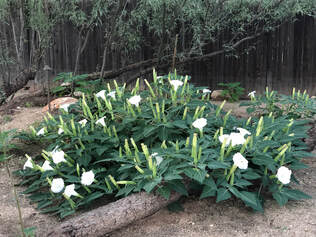 Frequently encountered all over Arizona is the Sacred Datura, scientific name Datura wrightii. In RillitoBend, it is seen in private gardens, on roadsides, and in Summer 2022, in the Rancho Morado Rain Garden. Datura wrightii in private garden, 2022 monsoon season, single plant Photo by Melanie Campbell-Carter  This fascinating perennial belongs to the Solanaceae family, along with tomatoes, potatoes, peppers, and eggplant. Other common names for the Datura include: Jimson weed, thorn-apple, moon lily, and angel’s trumpet. Much like the potato, the Datura has a fleshy, tuberous root which sprouts when the soil warms. Unlike the potato, Datura is relatively easy to grow from seed. Datura wrightii, private garden, 2022 Photo by Melanie Campbell-Carter 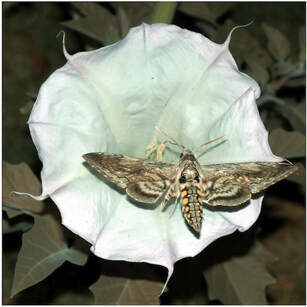 Datura is a night bloomer, pollinated by nocturnal moths and occasionally, bats. A single blossom may have up to one ounce of nectar at its base, which at dusk perfumes a wide area to attract its pollinators. The primary pollinators are the sphinx or hawk moths, which are often mistaken for a hummingbird at dusk. Some of these large moths are about the same size as a hummingbird, making a soft whirring noise with their wings as they hover at each newly opened bloom. Hawkmoth (Hyles lineata) at Sacred Datura (Datura wrightii) flower Photo by Mike Lewinski, Tres Piedras, NM Courtesy of https://creativecommons.org/licenses/by/2.0]

Sonoran Moonglow 22" X 16", acrylic on paper © 2021, Melanie Campbell-Carter Photo by Prull Photography Sacred Datura article sources and photo credits:
2 Comments
|
RillitoBend Rambles shares images and stories of our neighborhood that support our core value of respect for our natural world. Participation is open to all, whether by subscribing to posts, commenting on stories, or submitting your own rambling adventure for publication.
Please sign up below to receive our postings Archives
April 2025
Categories
All
The RillitoBend Neighborhood also has a mailing list to keep people up to date on the goings on in the 'hood' Sign up Below
|

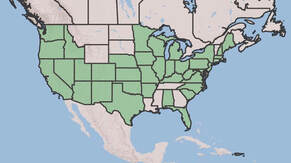
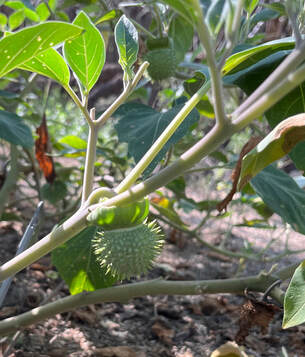
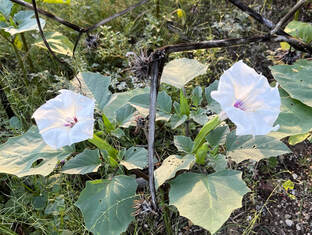
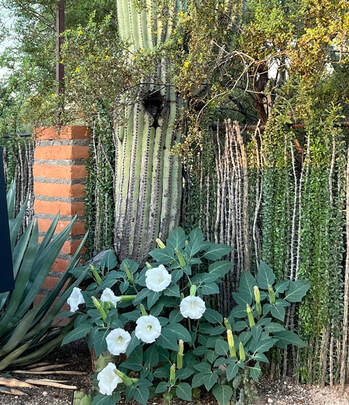
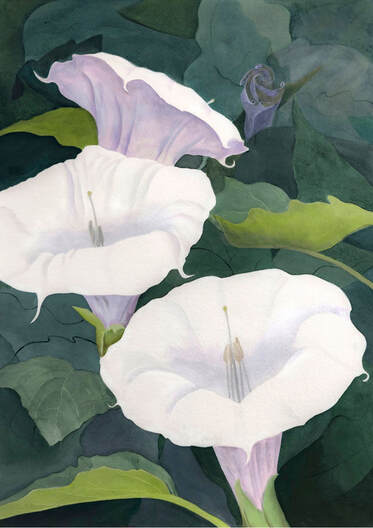
 RSS Feed
RSS Feed